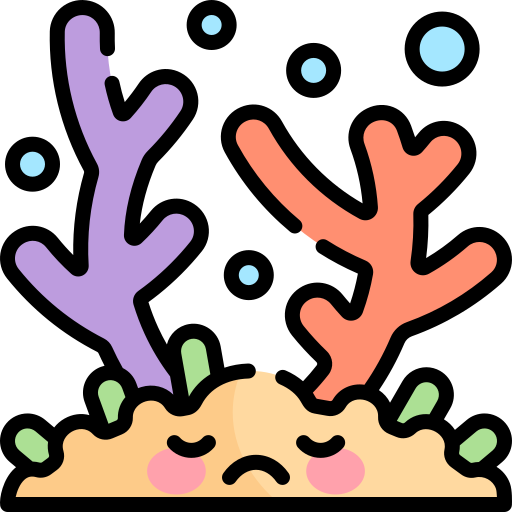Problem with QTing a fish (of which I am a big suporter of QTing fish) is that you can place a fish in a QT tank and if/when you transfer it to the display tank you can still stress it out and cause it to Ich up. THe water parameters may be exact and it may still Ich up. I have had it happen to me on a few ocasions. Taking a fish from a display tank and placing it in a QT can stress it out and cause its condition to worsen and if it is transfered to the display after the proper treatment and stressed out.....see the first part of my post.
The point I am trying to get at here is YES fish should be QT'd for a proper amount of time before adding to the display, and YES treating a diseased fish in a display is a NO NO and needs to be done in a seperate tank and YES you can take all these steps and still have a problem, oh and YES it can happen to anyone. So remember each fish/Coral is different and needs to be treated as such.
But I think Ink wanted this thread to ID certain Diseases in fish and their treatments. I'll start:
Cryptocaryoniasis, White Spot Disease or Marine Ich is caused by an infestation of the
ciliated protozoan Cryptocaryon irritans. Although Cryptocaryon becomes a parasitic organism at one stage in its life cycle like Oodinium and Brooklynella do, and it progesses less rapidly than these other saltwater ich diseases, in a closed aquarium system it can reach overwhelming and disasterous numbers just the same if it is not diagnosed and treated upon recognition.
The Life Cycle of Cryptocaryon irritans
- Free-swimming cells called tomites are released from a mature tomont, or encrusted cyst, and go in search of a host fish, typically dying in a day or two if one is not found.
- Upon finding a host the tomites attach to the gills or body and develop into parasitic trophonts, at which stage the organisms burrow into the fish and begin feeding on its tissues.
- Once well fed the trophonts stop feeding and encyst, at which stage they become inactive tomonts. zSB(3,3)Sponsored Links
No Sick FishTreatments for sick marine fish Reef Safe, Invert Safewww.nosickfish.com
Fish diseaseFind the right answers about fish disease.www.healthline.com
Pet Shop New York CityFull Line Pet Shop Free No Hassle One Year Warranty!www.AWorldOfPets.com
These dormant cysts can remain trapped in the fish's mucus, be inbedded deep in the tissue, or drop off and fall to the bottom. Over a period of 6 to 10 days the cells inside the cysts reproduce by single-cell division, and become tomites. Once reaching maturity the cysts rupture, each releases hundreds of new free-swimming tomites, and the cycle begins again, but in much larger numbers.
Symptoms to Look For
Unlike
Oodinium and
Brooklynella that typically attack the gills first, which allows these ich diseases to advance into life-threatening levels quickly as they go unnoticed, Cryptocaryon usually appears at the onset as salt-sized white spots visible on the body and fins of a host fish, and when the organisms become parasitic, it is then that they move inwards to the gills. Because crypto is more easily recognized in its beginning stage, this makes it much easier to treat and cure before it gets out of control.
Aside from the appearance of the white spots, fish will scratch against objects in an attempt to dislodge the parasites, and rapid respiration develops as tomonts, mucus, and tissue debris clogs the gills. Fish become listless, refuse to eat, loss of color occurs in patches or blotches as the trophonts destroy the pigment cells, and
secondary bacterial infections invade the lesions caused by the trophonts.
Treatment Recommendations
Although copper is very effective on Oodinium, and it works well to eliminate crypto organisms in their free-swimming tomite stage, it is not as effective on the Cryptocaryon trophonts that burrow deeply into the tissues of fish. A combination of freshwater and formalin treatments adminstered by means of dips, baths, and prolonged treatment over a period of time in a QT is recommended.
Preventing Reinfestation Reinfection will occur no matter how effectively the fish have been treated if Cryptocaryon is not eradicated from the main aquarium, which can be accomplished by keeping the tank devoid of any fish for at least 4 weeks. For fish-only aquariums hyposalinity can be applied, and to speed up the life cycle of the organisms, elevate the tank temperature to 85 degrees for 10 days to 12 days. For treating reef tanks,
FishVet No-Ich Marine,
Ruby Reef Kick-Ich, and
Chem-Marin Stop Parasites are Cryptocaryon specific remedies that are said to be "reef safe". Several days prior to returning fish to the main aquarium, clean all filtering equipment, change any filtering materials, and do a water change.
From About.com





